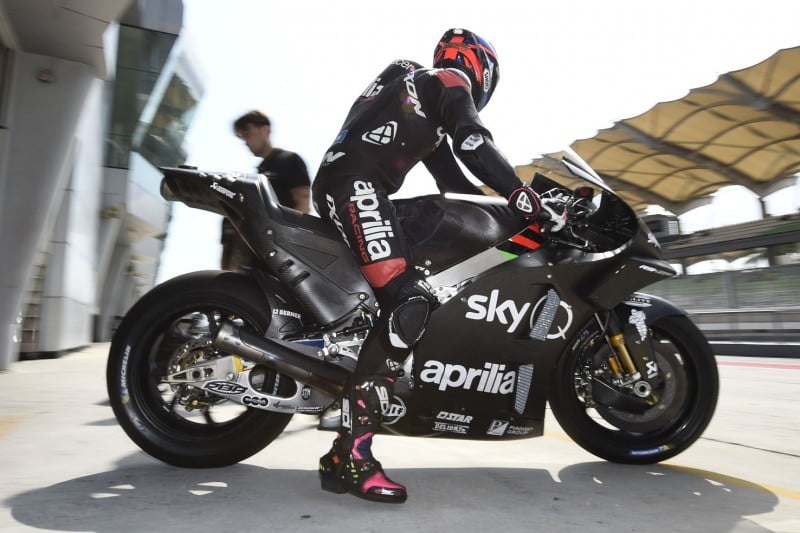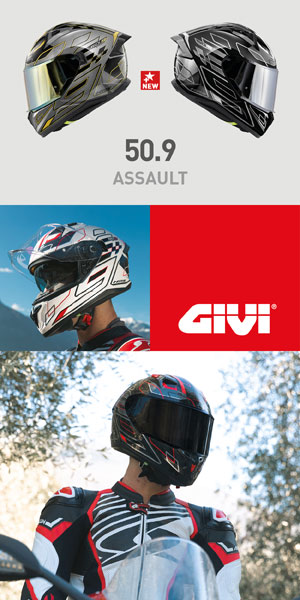Ducati has developed a clever way to help its riders start without suffering the involuntary effect of a wheelie: the holeshot device. Since then, other manufacturers have also been working on it. But when Ducati lowers the rear suspension, Aprilia prefers to compress the fork. Let's see how this system works, and why it was developed this way.
This device is not a new technology developed by MotoGP teams, since it has been around for decades. In most cases - Ducati being the best example – these systems have an effect on the rear of the motorcycle, holding it down to allow the rider to accelerate harder. But the system developed by Aprilia – shown below – keeps the fork in the low position, as is usually seen in Motocross.
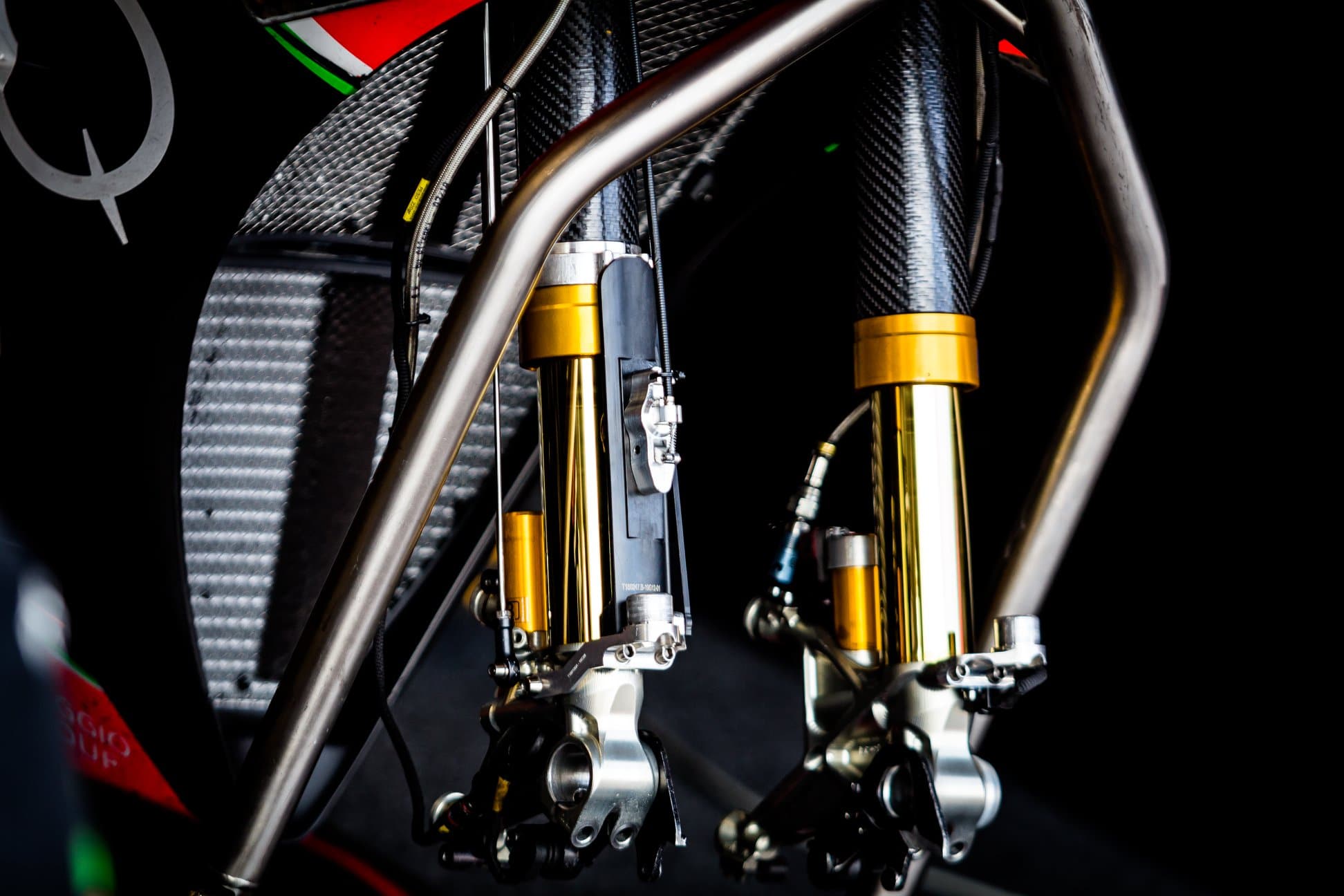
A system that appeared over the last 2 seasons: the holeshot device
We also notice in this image that the fork sliders are made of carbon. The fork is thus lighter than an aluminum fork, which increases the handling of the motorcycle and facilitates changes of direction. In addition, these sliders are slightly ovalized, which makes them stiff when braking and allows them to be a little more laterally flexible at high lean angles to help the rider find grip!
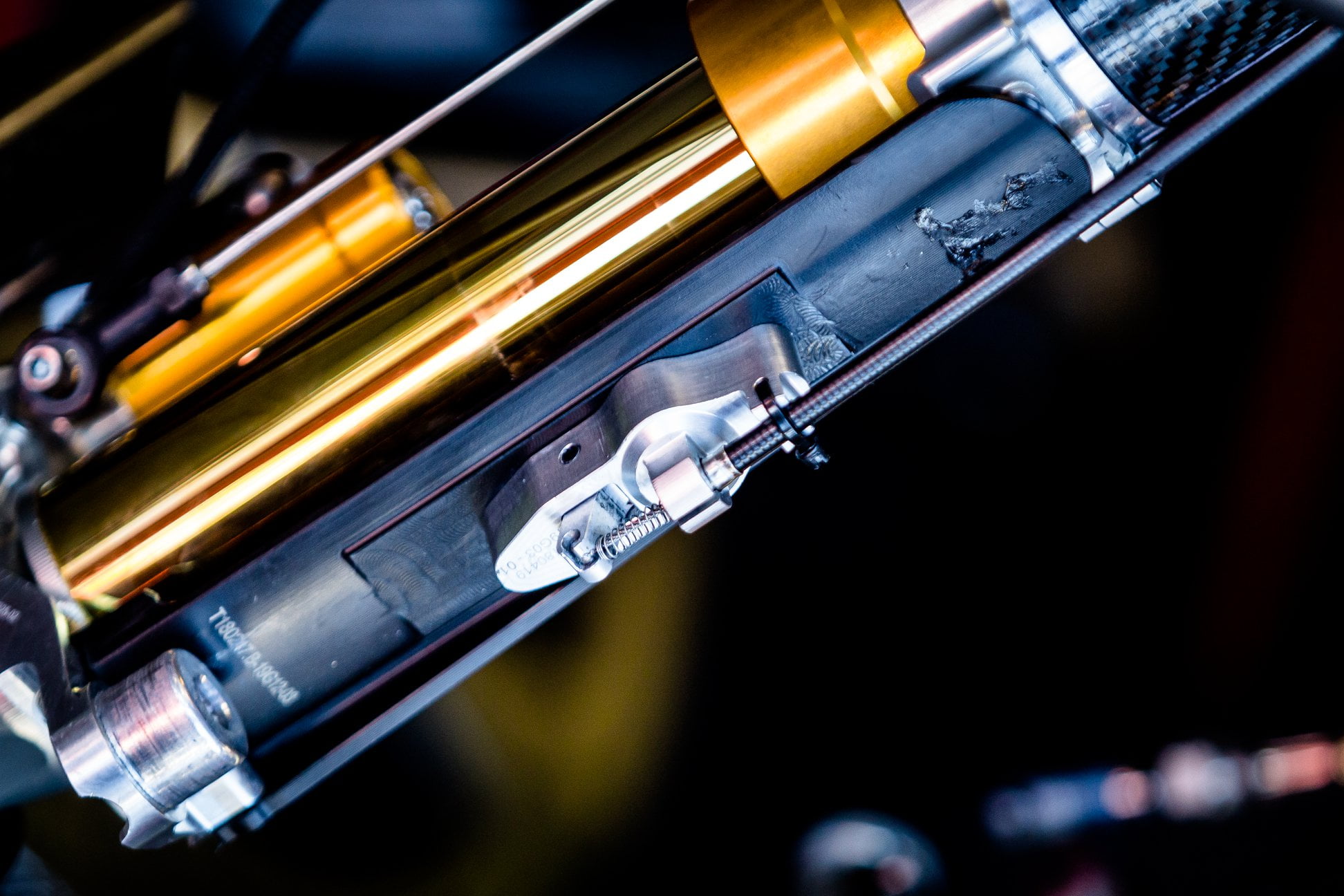
Here is the system seen up close. The cable allows you to operate the device, via a lever located at the level of the handlebars
To operate it, the rider will have to manipulate a small lever placed under the handlebars while compressing the fork. Once the suspension has been compressed beyond the bottom of the device, the rider releases the lever. This causes the suspension to be slightly compressed, lowering the front end and the motorcycle's center of gravity.
When the driver brakes upon arriving at the first turn, the suspension compresses, which separates the two parts of the device. The fork returns to its nominal length and can operate normally. If the rider were to make a new start, he would have to repeat the process of manipulating the lever when the fork is compressed.
But then why compress the fork rather than the shock absorber?
Lowering the front of the motorcycle has two advantages, in addition to being a very simple system to implement technically. First, it changes the balance of the motorcycle by putting more weight on the front wheel. In fact, the center of gravity moves forward by compressing the fork. Second, since the fork is not vertical, lowering the fork causes the front wheel to move slightly rearward, increasing the front static weight.
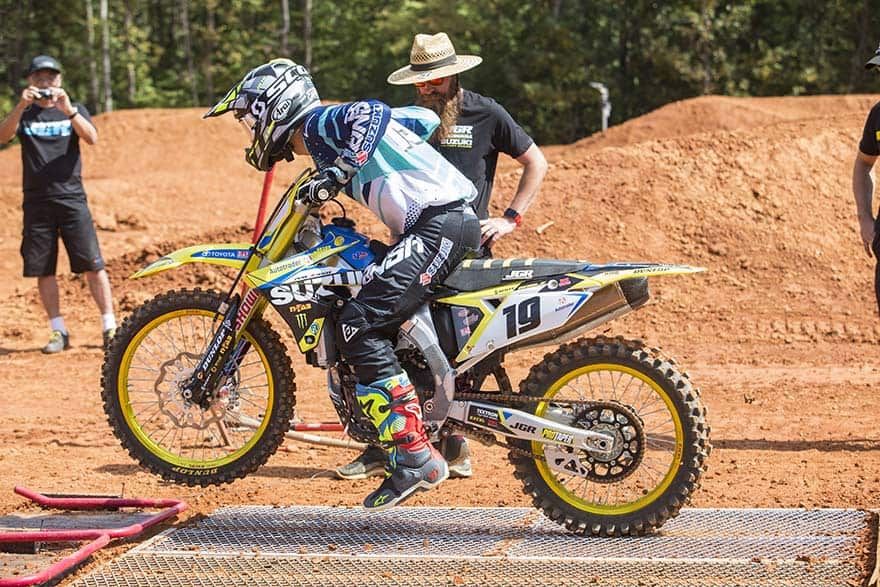
The system used in Motocross limits wheelies, even if it does not completely prevent them
However, it is also simpler to place this system at the rear because there are more ways to compress the shock, instead of using hooks to hold the front down as seen previously. And it is more difficult for competitors to examine and copy this device. This is why Yamaha is working on a system similar to that of Ducati.
Development of a “Holeshot Device 2.0”?
Just like Yamaha, Aprilia is working on a system similar to that implemented by Ducati. With the Holeshot 2.0 feature, the rear can be compressed and lowered while riding. “We have been working on a similar, if not identical, system for some time,” revealed Romano Albesiano a few weeks ago. “We hope we will have it soon with the bike. The simulations don't show big benefits, but small things help too. » Indeed, in addition to allowing the center of gravity of the motorcycle to be lowered during starts, this system also seems to prove useful in a straight line, because it allows the rider to lower the motorcycle by a few millimeters and modify the aerodynamic angle of a few degrees to increase top speed, as we detailed previously.
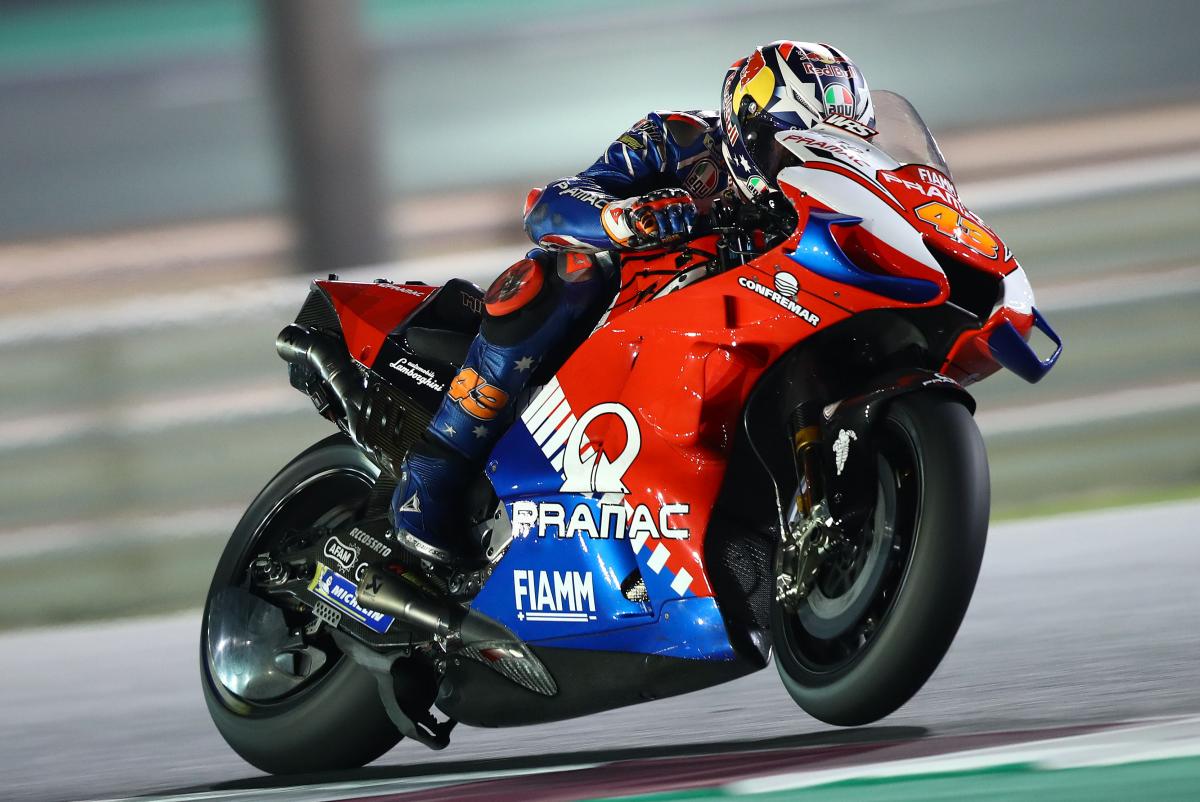
Jack Miller uses the device here in full acceleration











